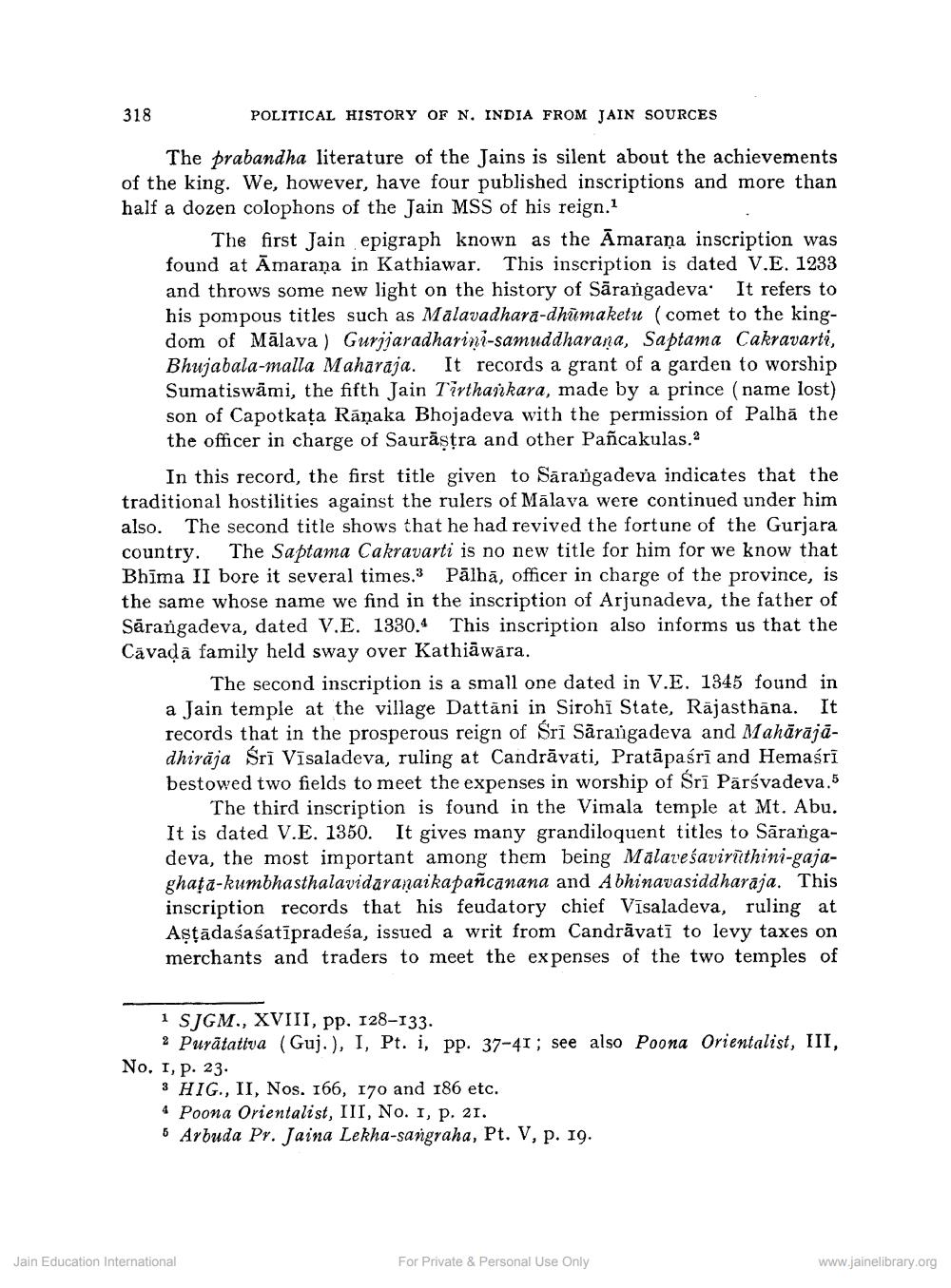________________
318
POLITICAL HISTORY OF N. INDIA FROM JAIN SOURCES
The prabandha literature of the Jains is silent about the achievements of the king. We, however, have four published inscriptions and more than half a dozen colophons of the Jain MSS of his reign.
The first Jain epigraph known as the Āmarana inscription was found at Amarana in Kathiawar. This inscription is dated V.E. 1233 and throws some new light on the history of Sārangadeva: It refers to his pompous titles such as Malavadhara-dhūmaketu (comet to the kingdom of Mālava ) Gurjjaradharini-samuddharana, Saptama Cakravarti, Bhujabala-malla Maharaja. It records a grant of a garden to worship Sumatiswāmi, the fifth Jain Tirthanikara, made by a prince (name lost) son of Capotkața Rāņaka Bhojadeva with the permission of Palhã the the officer in charge of Saurastra and other Pañcakulas.
In this record, the first title given to Sarangadeva indicates that the traditional hostilities against the rulers of Mālava were continued under him also. The second title shows that he had revived the fortune of the Gurjara country. The Saptama Cakravarti is no new title for him for we know that Bhīma II bore it several times. Pālhā, officer in charge of the province, is the same whose name we find in the inscription of Arjunadeva, the father of Sārangadeva, dated V.E. 1330.4 This inscription also informs us that the Cāvadā family held sway over Kathiāwära.
The second inscription is a small one dated in V.E. 1345 found in a Jain temple at the village Dattāni in Sirohi State, Rajasthāna. It records that in the prosperous reign of Sri Sāraigadeva and Mahārājādhiraja Sri Vīsaladeva, ruling at Candrāyati, Pratāpaśrī and Hemasri bestowed two fields to meet the expenses in worship of Śrī Pārsvadeva.5
The third inscription is found in the Vimala temple at Mt. Abu. It is dated V.E. 1350. It gives many grandiloquent titles to Sārangadeva, the most important among them being Malaveśavirīthini-gajaghața-kumbhasthalavidaranaikapancanana and Abhinavasiddharaja. This inscription records that his feudatory chief Vīsaladeva, ruling at Astādaśaśatīpradeśa, issued a writ from Candrāyatī to levy taxes on merchants and traders to meet the expenses of the two temples of
1 SJGM., XVIII, pp. 128-133.
2 Purătattva (Guj.), I, Pt. i, pp. 37-41; see also Poona Orientalist, III, No, I, P. 23
3 HIG., II, Nos. 166, 170 and 186 etc. 4 Poona Orientalist, III, No. 1, p. 21. 6 Arbuda Pr. Jaina Lekha-sangraha, Pt. V, p. 19.
Jain Education International
For Private & Personal Use Only
www.jainelibrary.org




